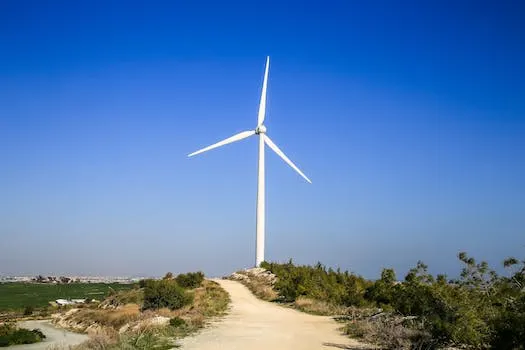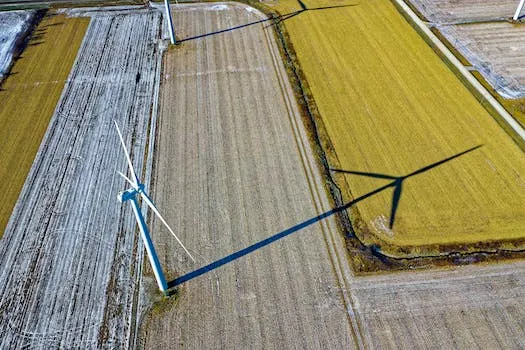
Uncovering the Top Polluting Energy Sources
As the world becomes increasingly aware of the environmental impact of energy sources, it is essential to understand which ones are contributing to the most pollution. From coal and natural gas to oil and nuclear power, it is important to know the facts in order to make informed decisions about our energy consumption and its effect on our planet.
Greenhouse gas emissions from electricity production, transportation, industry, agriculture, and forestry are a major contributor to climate change. Burning natural gas for energy results in fewer emissions of nearly all types of air pollutants and carbon dioxide (CO2) than burning coal or petroleum. However, coal, oil, and gas are responsible for much more atmospheric methane than previously known - a super-potent warming gas that has an even greater impact on climate change than CO2.
Oil releases a huge amount of carbon when burned - approximately a third of the world's total carbon emissions - making it one of the dirtiest Sources of energy available today. There have also been numerous oil spills over recent years that have had devastating effects on marine life as well as human health in affected areas.
In contrast with fossil fuels such as coal and oil which are highly polluting sources of energy production; nuclear power is vastly safer with fewer emissions while modern renewable energies such as solar or wind power offer clean alternatives with no direct greenhouse gases released into the atmosphere during operation. It is clear that transitioning away from fossil fuels towards cleaner forms of energy production will be essential if we want to protect our planet for future generations.
Coal
Coal is the most widely used energy source in the world, responsible for more than 40% of global electricity generation. It is a nonrenewable fossil fuel formed from prehistoric vegetation that accumulated about 300 million years ago. Coal is relatively inexpensive to produce and convert to useful energy, however producing and using coal has its drawbacks. Burning coal releases pollutants such as sulfur dioxide, nitrogen oxides, mercury, lead and particulate matter into the atmosphere which can cause respiratory problems, heart disease and even cancer. In addition to air pollution, coal mining can also lead to destruction of habitats, water pollution and destruction of communities.
The combustion process used in generating electricity from coal also poses a number of risks. Mercury emissions are particularly concerning as they can accumulate in fish tissue leading to health risks for those who consume them. sulfur dioxide emissions contribute to acid rain which damages crops and forests while nitrogen oxide emissions contribute to smog formation which can cause respiratory problems in humans.
Despite these drawbacks associated with burning coal for energy production it still remains one of the most popular sources due its abundance compared with other fossil fuels like crude oil or natural gas as well as its low cost relative to renewable sources like solar or wind power. However it is important that steps are taken by governments around the world towards reducing our reliance on this polluting source of energy if we are going to protect our environment from further damage caused by air pollution and climate change caused by greenhouse gases released during combustion processes.
Natural Gas
Natural gas is the second most popular source of energy in the world and is often seen as a cleaner alternative to coal. Burning natural gas for energy results in fewer emissions of nearly all types of air pollutants and carbon dioxide (CO2) than burning coal or petroleum, making it an attractive option for many countries. Coal, crude oil, and natural gas are all considered fossil fuels because they were formed from the remains of plants and animals that lived millions of years ago. In terms of emissions, natural gas is the most carbon-intensive fossil fuel; its combustion releases around 40% less CO2 than coal and around 20% less than oil.
However, burning natural gas still contributes to air pollution by releasing nitrogen oxides and carbon dioxide into the atmosphere; both pollutants contribute to climate change. Additionally, production processes can lead to water contamination and destruction of habitats. Climate scientists have warned that even though natural gas produces half as much C02 when burned compared to coal, it still has a significant impact on global warming due to its high methane content which traps more heat in our atmosphere than CO2 does over time.
Overall, while natural gas may be a cleaner alternative compared to other fossil fuels such as coal or oil when it comes to emissions per unit energy produced, its production processes can still cause environmental damage if not managed properly. Therefore it's important for countries looking into using this form of energy source take into account these potential risks before doing so in order ensure sustainable development practices are followed throughout their operations.
Oil
Oil is one of the most widely used sources of energy in the world, accounting for more than 25% of global electricity generation. Unfortunately, burning oil releases hazardous pollutants into the atmosphere, including sulfur dioxide, nitrogen oxides and particulate matter. These pollutants can cause a range of health problems such as respiratory issues, heart disease and even cancer. In addition to air pollution, oil production can also lead to water contamination and destruction of habitats.
Oil is not only a major contributor to air pollution but also a significant source of methane emissions – a potent greenhouse gas with global warming potential more than 25 times that of carbon dioxide. Even today, fossil fuels such as oil, coal and gas account for around 80 percent of our energy needs; however this comes at an environmental cost due to their high levels of air pollution. The most concerning pollutants are particulate matter (PM), carbon monoxide (CO), ozone (O3), nitrogen dioxide (NO2) which have been linked with asthma, cancer heart and lung ailments as well as acid rain and global warming.
The effects from burning fossil fuels are far-reaching; however there are steps that can be taken to reduce their impact on our environment such as switching to renewable sources or investing in cleaner technologies like electric vehicles or solar panels. It’s important that we take action now before it’s too late so we can ensure future generations have access to clean air and safe drinking water without having to worry about the damaging effects from burning fossil fuels like oil.
Nuclear Energy
Nuclear energy is the fourth most popular source of energy in the world, accounting for more than 8% of global electricity generation. It is known for its low levels of air pollution, but it still has a major impact on environmental pollution. Nuclear power plants release radioactive waste into the atmosphere and water supply, which can cause long-term health problems and destruction of habitats and degradation of ecosystems. In 2019, nuclear power accounted for 4% of global primary energy production.
Nuclear power plants produced 778 billion kilowatt hours (kWh) in 2021, making up 50% of America's clean energy output. Globally, nuclear reactors provide 10% of electricity from about 440 operating power plants located mainly in Europe with good pollution controls. Unlike fossil fuel-fired power plants that produce air pollution or carbon dioxide while operating, nuclear reactors do not emit these pollutants while running. Nuclear is now the second largest source of low-carbon electricity today with 2700 terawatt hours (TWh) generated in 2018 from 452 operating reactors worldwide.
A cooling agent such as water or liquid metal or molten salt is used to cool down the reactor core during operation as it gets heated by nuclear fission reactions taking place inside it. This cooling agent helps maintain a safe temperature level inside the reactor core to prevent any accidents from happening due to overheating caused by uncontrolled chain reactions within it. The cooling agent also helps reduce emissions released into the environment by preventing them from escaping through steam vents during operation thus reducing environmental damage caused by them significantly compared to other sources like coal fired thermal plants that release large amounts pollutants into atmosphere when running at full capacity continuously over long periods time without proper emission control measures being taken place at all times .
Hydropower
Hydropower is the fifth most popular source of energy in the world, accounting for more than 6% of global electricity generation. It is a renewable energy source that uses the natural flow of moving water to generate electricity, and it has been used for centuries. Hydropower is better for the environment than other major sources of electrical power, which use fossil fuels as it does not emit waste heat or air pollutants. In fact, hydropower produces over twice as much energy as wind and over four times as much as solar.
However, hydropower can still lead to environmental damage such as disruption of natural water cycles, erosion and destruction of habitats. Additionally, dams can cause water pollution and destruction of communities living near them. The emissions from hydroelectric generators include a myriad of toxic air pollutants and carbon dioxide (CO2), which is one of the most important human-produced climate-altering gases.
At The Nature Conservancy we draw from more than 70 years’ experience in conservation to develop solutions that balance our need for clean energy with our need to protect nature – this approach is called Hydropower by Design. This method helps identify potential sites where hydropower projects can be developed without causing significant environmental damage or displacement of people living nearby; thus allowing us to move towards a renewable energy future while protecting nature at its best capacity possible.
Conclusion
In conclusion, it is essential to understand the environmental impacts of the various energy sources in order to make informed decisions about our energy consumption and the future of our planet. Coal, natural gas, oil, nuclear and hydropower are all major sources of electricity production that have their own unique set of environmental impacts. Hydropower is a domestic source of energy that does not emit waste heat or other pollutants into the atmosphere like other major sources do. Renewable resources such as solar energy, wind power, geothermal heat and biomass can also be used to generate electricity without polluting the environment. Additionally, renewable power is becoming more cost-effective as innovation brings down costs and starts to deliver on its promise for a clean energy future. Finally, life cycle impacts from 1 kWh of natural gas power production must be taken into consideration when making decisions about which type of electricity generation should be used in order to reduce pollution levels.









